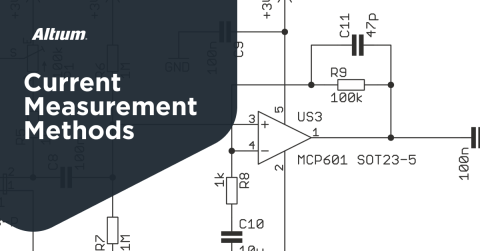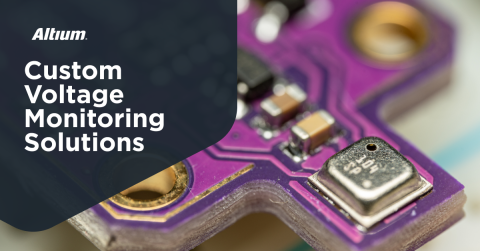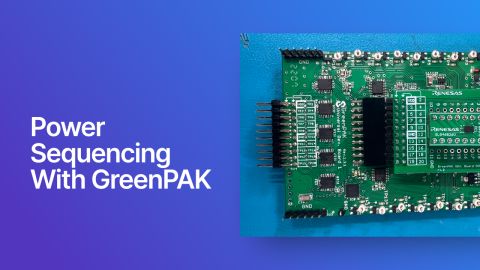Types of Supervisor and Reset ICs

Supervisor and reset ICs ensure predictable system operation. They monitor voltages, timing, and processor activity, generating resets or controlling logic. This prevents inconsistent behavior from discrete components. Integrating these functions offers deterministic control and avoids undefined processor states during power-up or supply transients.
Supervisor ICs vary, offering voltage monitoring, watchdog timers, sequencing, or backup switchover. Device selection depends on monitoring needs, firmware recovery, and sequencing/backup requirements. Understanding these functions simplifies design, reduces discrete circuits, and ensures reliable operation.
Types of Supervisor ICs
Supervisor ICs can be grouped into several functional categories that reflect the tasks they perform in a system. At the simplest level, they provide voltage monitoring and reset generation to keep processors in a defined state during power transitions. More advanced devices combine sequencing, watchdog timers, or power-fail detection, enabling them to manage multiple supply rails, enforce firmware responsiveness, and ensure backup operation during outages. The choice among these categories depends on the system’s architecture, the number of supply domains, and the need for recovery or reset features.
The table below summarizes the common categories of supervisor ICs, their typical applications, and examples of representative parts. This overview helps narrow down which class of devices is appropriate before examining specific features such as reset delay, watchdog window configuration, or power-fail thresholds. Once the category is chosen, engineers can compare devices within that group to select one that aligns with timing requirements, interface compatibility, and system-level constraints.
|
Situation |
Supervisor class |
|
Rail may dip during inrush, brownout, or battery sag |
Voltage monitor/reset supervisor |
|
MCU/CPU may hang or deadlock |
Watchdog supervisor (windowed if possible) |
|
Multiple rails must rise/shut down in order |
Sequencer/power-up supervisor |
|
Same rail must stay within a window (UV + OV) |
Window supervisor |
|
Many rails on one board |
Multi-channel supervisor |
|
Front-panel reset pushbutton |
Pushbutton reset controller |
|
Main supply loss with memory retention |
Power-fail/backup supervisor |
|
Supervision of voltages and digital inputs |
Mixed-signal programmable supervisor |
Voltage Monitor/Reset Supervisor ICs
These devices continuously compare supply voltages against internal or external reference thresholds and generate a reset signal if the supply is outside tolerance. The reset signal can be at a logic level which toggles an EN/RST pin on a component, or it toggles a MOSFET which supplies the logic level to the relevant pin.
These can be used when deterministic reset at power-up and guaranteed recovery from brown-out conditions are needed, but without relying on a routine in firmware for the intervention. They are especially useful in systems where a processor or ASIC must remain inactive until its power regulators have settled, and they simplify the design compared to building discrete comparator circuits with RC timing.
- Function: Monitor one or more supply rails and assert reset when voltage falls outside a specified threshold
- Typical Features: Programmable thresholds, hysteresis, push-pull or open-drain outputs, manual reset input
- Design Usage: Ensures processors, FPGAs, or other digital devices only start up when supplies are within range; prevents undefined behavior during brown-out
- Example: TPS37100 (dual-channel supply supervisor)
Watchdog Timer Supervisors
Watchdog supervisors are included in designs where the system must automatically restart from software or hardware faults. The IC enforces that firmware regularly toggles an input pin, and if the signal is missing, the supervisor asserts a reset to restart the processor. In systems with higher safety requirements, windowed watchdogs can be used to verify that toggles occur within a specific time window.
- Function: Force a system reset if the host processor fails to signal the watchdog within a defined interval
- Typical Features: Fixed or adjustable timeout period, windowed watchdog (detects early and late servicing), disable input
- Design Usage: Protects against firmware lockup or stalled execution
- Example: TPS3424 (watchdog timer with adjustable watchdog window)
Sequencer and Power-Up Supervisors
Power sequencers are applied in systems where multiple supply rails must rise and fall in a defined order to avoid latch-up, current surges, or damage to integrated circuits. These ICs provide control logic that replaces discrete RC delay networks or microcontroller-based sequencing, which may not react quickly enough during abnormal events.
Sequencers also offer predictable timing that is repeatable across temperature and component variation, which is essential when working with processors or FPGAs that specify strict voltage ramp requirements. These are normally used when more than two rails need sequencing or when shutdown must follow a defined order (often reverse order).
- Function: Control the order in which multiple supply rails start up or shut down
- Typical Features: Programmable delay times, enable outputs for regulators, fault logging
- Design Usage: Required in systems with strict sequencing (e.g., FPGAs, GPUs, SoCs with analog/digital core supplies)
- Example: TPS386000 (multi-channel supervisor with sequencing support)
Window Voltage Supervisors
A window supervisor is used when both undervoltage and overvoltage events can degrade system function. In contrast to a simple reset supervisor, these devices ensure that a supply stays within a safe band, which is necessary when a rail must remain tightly regulated to avoid stressing analog or digital I/Os.
These are used when a rail’s upper limit could overdrive I/Os, while dropping below the lower limit could cause logic errors. There is also a safety element, as a rail operating outside the window might cause some system components to turn off while others remain on. They replace the need for multiple discrete comparators and combine fault logic into one device.
- Function: Monitor a supply rail or reference voltage for both undervoltage and overvoltage conditions
- Typical Features: Dual comparators internally configured as a voltage window, separate fault outputs
- Design Usage: Protects against overvoltage damage and undervoltage instability on the same rail
- Example: TPS3700 (window comparator-style supervisor)
Multi-Channel Supervisors
When a system contains several independent rails, a multi-channel supervisor allows the designer to monitor these all from a single IC. These devices reduce the complexity of wiring multiple discrete supervisors and provide a unified fault output that reflects the combined state of all monitored supplies.
These parts are especially useful in boards with FPGAs or SoCs that require separate power supplies for multiple I/O banks, memory, analog rails, and digital rails. Selecting one of these devices also simplifies layout because all monitoring is routed through a single package with consistent timing behavior.
- Function: Monitor several voltage rails simultaneously with separate thresholds per rail
- Typical Features: Independent programmable thresholds, combined fault output, sequencing capability
- Design Usage: Complex systems with many power domains; simplifies board-level monitoring
- Example: MAX16054 (quad voltage supervisor)
Pushbutton/Manual Reset Controllers
Pushbutton reset controllers are chosen when a human operator needs to reset a system reliably, typically through a front-panel or handheld interface. Mechanical switches often introduce contact bounce, which can result in multiple unintended resets if not filtered.
These ICs provide internal debouncing logic and a consistent reset duration, removing the need for RC filters or microcontroller-based software handling. They are commonly used in consumer electronics, test equipment, or industrial control panels where the operator must trigger a clean and reproducible system reset.
- Function: Integrate system reset generation with debounced pushbutton input
- Typical Features: Pushbutton debounce, programmable reset duration, watchdog integration
- Design Usage: Eliminates external RC debounce circuits for front-panel reset switches
- Example: MAX16054
Power-Fail and Battery-Backup Supervisors
Power-fail and battery-backup supervisors are implemented in designs where continuity of operation is required even though the device may need to switch between power supply options. These ICs monitor the primary supply and trigger a switch to a backup power source, such as a battery, before the voltage falls too low. Designers might use these parts in portable equipment where brown-outs may occur due to battery depletion.
- Function: Detect loss of main power and switch to backup supply (coin cell, supercap, secondary regulator)
- Typical Features: Power-fail comparators, supply switchover control, reset output
- Design Usage: RTC retention, SRAM backup, portable devices
- Example: MAX16046
Mixed-Signal Supervisors (Analog + Digital)
Mixed-signal supervisors are applied when the system requires monitoring of analog and digital components as part of determining reset, sequencing, or shutdown. These components integrate an analog front-end which can define logical conditions based on measured analog inputs. When taken with other digital inputs, the device can put the inputs through a logic circuit which determines the sequencing, reset, or shutdown requirement.
- Function: Combine voltage monitoring, sequencing logic, analog sensing, and sometimes DAC/ADC blocks in one IC
- Typical Features: Programmable thresholds via I²C/SPI, fault logging registers, configurable timing
- Design Usage: Systems where monitoring, logging, and reset control must be tightly integrated
- Example: LTC2937 (six-channel programmable supply monitor)
Mixed-Signal Processors Offer the Most Flexibility
The most flexible option for developing a supervisor IC is to use a mixed-signal processor. These CPLD-like devices include digital processing capabilities in silicon which can be programmed without running an embedded application in memory. They also include analog interfaces needed to develop any of the other types of supervisor ICs listed above.
The Renesas GreenPAK line of products includes multiple LUTs embedded in the mixed-signal processor macrocells, which are then programmed by the system designer to perform logic operations based on analog inputs and a set of digital I/O. An example application involving a mixed-signal processor monitoring two rails with two digital I/O providing logic states is shown below.
Example application with a Renesas GreenPAK mixed-signal processor used as a supervisor IC.
In this application, the mixed-signal processor performs the following:
- The processor continuously monitors the input voltage/current values (V1, I1 and V2, I2) using internal comparators
- Logic inputs are provided to the digital interface (I/O1, IO/2, and the I2C bus)
- The readings from 1 and 2 are used as inputs in an LUT
- I/O3, 4, and 5 are toggled ON or OFF based on the result from the LUT
Programmable hysteresis and feedback in the analog comparator interfaces allows windowing to be implemented if required for the specific supervisor function. In addition to developing a fully custom system reset IC or supervisor, the number of LUTs in the devices and the connected analog/digital I/O allow instantiation of multiple other functions, such as power-up/power-down sequencing, into a single chip.
The mixed-signal processor components and developer tools in Renesas GreenPAK give designers the ability to develop fully custom digital, analog, or mixed signal system reset ICs. These programmable mixed-signal processors allow consolidation of functions found in system reset circuitry, allowing for smaller, more efficient systems. To learn more, take a look at the GreenPAK components and reference examples.
Whether you need to build reliable power electronics or advanced digital systems, use the complete set of PCB design features and world-class CAD tools offered by Altium to implement your GreenPAK solutions. Altium provides the world’s premier electronic product development platform, complete with the industry’s best PCB design tools and cross-disciplinary collaboration features for advanced design teams. Contact an expert at Altium today!











 Back
Back